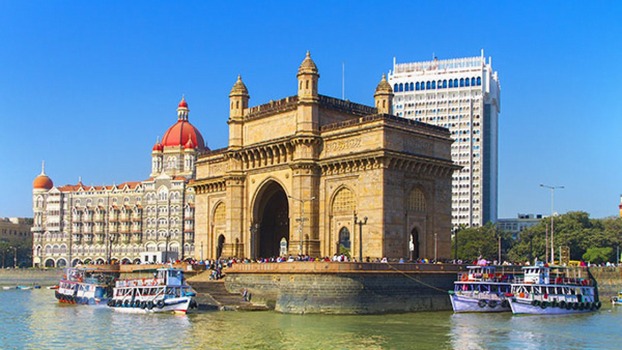About us

The history of the CULTURE HOUSE of Islamic Republic of IRAN in Mumbai
The first story of the whispers of Iran's official presence as a cultural activist in Indian Subcontinent was with the center of Mumbai that goes back to before 1956. On March 9th 1956 (18اسفند 1334) Mr. Mohammad Kamkar Parsi, the Secretary from the Ministry of Culture and Art; arrived in this city to teach Persian language to Iranian residents of Mumbai specially the Zoroastrians and the Parsees. After numerous meetings with Mumbai celebrities, he selected the current location of Iran Culture House for beginning cultural activities and spread of Persian language and literature.
Mr. Mohammad Kamkar Parsi, who was an Iranian teacher, was enthusiastic and aspired to expand Persian culture, language and literature in South India. He was the first officer of Iran Culture House in Mumbai that on December 19, 1956 (28 آذرماه 1335) started his official activities in an opening ceremony with the presence of Mr. Ali Asghar Hekmat the Iranian Ambassador in Delhi and Mr. Mohammad Qavam, Consul General of Iran in Mumbai and in fact it was the first Iranian cultural representation overseas. The first official cultural contract between the two countries goes back to 1956 (1335 شمسی). This cultural contract was signed by Mr. Ali Asghar Hekmat, the Ambassador of Iran in India and Maulana Abul Kalam Azad, then Minister of Culture of Indian Government in Delhi. The absence of attention of the Imperial Government (of Iran) can be clearly seen from the many correspondences of the year 1337 about the Culture House. A clear point in the study of the activities of Culture House before the Islamic Revolution, was the lack of attention to improve mutual cultural relations among glorious civilizations of Iran and India, because at that time the Imperial Government of Iran was under the influence of western imperialistic camp, and was not interested in expanding its relations with India, the independent country; which was one of the founders of Non-Alligned Movement (NAM) and after getting independence from the British colonialism, supported every freedom-seeking steps. During 1340 -1350 most of activities of the Culture House were educational and Persian language Classes were held in the form of day and night classes. Nevertheless this policy was continued in 1350.
With the victory of Islamic Revolution the cultural activities and co-operation between the two nations of India and Iran entered a new phase. In this period relation with all cultural and scientific parties of Indian people expanded as India was one of the first countries which officially recognized the newly established Islamic Republic of Iran.
Hence, after the victory of Islamic Revolution, cultural co-0peration was established in the form of new contracts, the two countries signed a cultural exchange program. Later with the visits of the then presidents of the two nations, programmes for cultural and artistic exchanges were signed which got revived later. Culture House of the Islamic Republic of Iran developed its qualitative and quantitative activities in all cultural fields, firstly with the departments of Persian language, through educational interactions with the universities especially with the Departments of Persian, history and Islamic Studies which lead to holding refresher courses, seminars and supporting scientific, cultural and literary research works and compositions. Thereafter it developed its activities in the fields of art and culture by supporting institutions, cultural NGOs and Iranian associations and activities such as artistic cultural festivals and exhibitions, cultural competitions, felicitating occasions of great cultural and common literary personalities, holding training workshops and skill boosting workshops for students and teachers of Persian language, preparing list of manuscripts and extending support for the publication and printing of more than 30 books in Urdu, English, Marathi and Gujarati on varied topics in different cities of South India.
-
The most important activities of CULTURE HOUSE
1. Establishment of Persian language classes.
2. Establishment of a library having Persian, English and Urdu books on the topic of Persian literature and history of Iran.
3. Holding cultural meetings and weekly, monthly gatherings about the history of the cultural civilization and Iranian art.
4. Screening Iranian films and documentaries.
5. Conducting Persian elementary school classes from first to sixth standard in two sections separately for girls and boys.
6. Organizing Zoroastrian festivals and occasions and observing ancient cultural –civilizational customs such as Nowruz and etc.
Important activities of Culture House of the Islamic Republic of Iran after the Islamic Revolution:
1. Organizing Seminar, gatherings, conference, scientific-cultural round-table meetings and developing cultural relations of the two nations through the co-operation of cultural elites and centres.
2. Holding educational courses and Quran competitions.
3. Preparation and sending of books, publications and cultural items.
4. Supporting Iranian students' cultural activities.
5. Preparation, editing and publishing subjects about various cultural topics.
6. Development of Persian language courses.
7. Recommending teachers and students of Persian language for participation in the refresher courses.
8. Supporting and participating in the international film festivals.
9. Providing resources and text books to the Persian departments of the universities.
10. Extending co-operation to the universities in the field of learning and research activities of Persian language, Iranology and Islamology.
11. Co-ordination and dispatching of interested scholars for travelling to Iran for different occasions such as scientific- cultural seminars.
12. Holding exhibitions of books, pictures, handicrafts, calligraphy, painting, Quran exhibitions and etc.
13. Organizing film weeks and cultural weeks in different cities.
14. Commemoration for cultural, literary and religious celebrities of both the countries.
15. Supporting the celebration of different national and religious occasions.
16. Inviting Iranian artistic groups for performing in India.
17. Supporting of the Iranian residents' cultural programmes.
18. Holding functions for the anniversary of the victory of Islamic Revolution.
Choose blindless
Red blindless Green blindless Blue blindless Red hard to see Green hard to see Blue hard to see Monochrome Special MonochromeFont size change:
Change word spacing:
Change line height:
Change mouse type:
